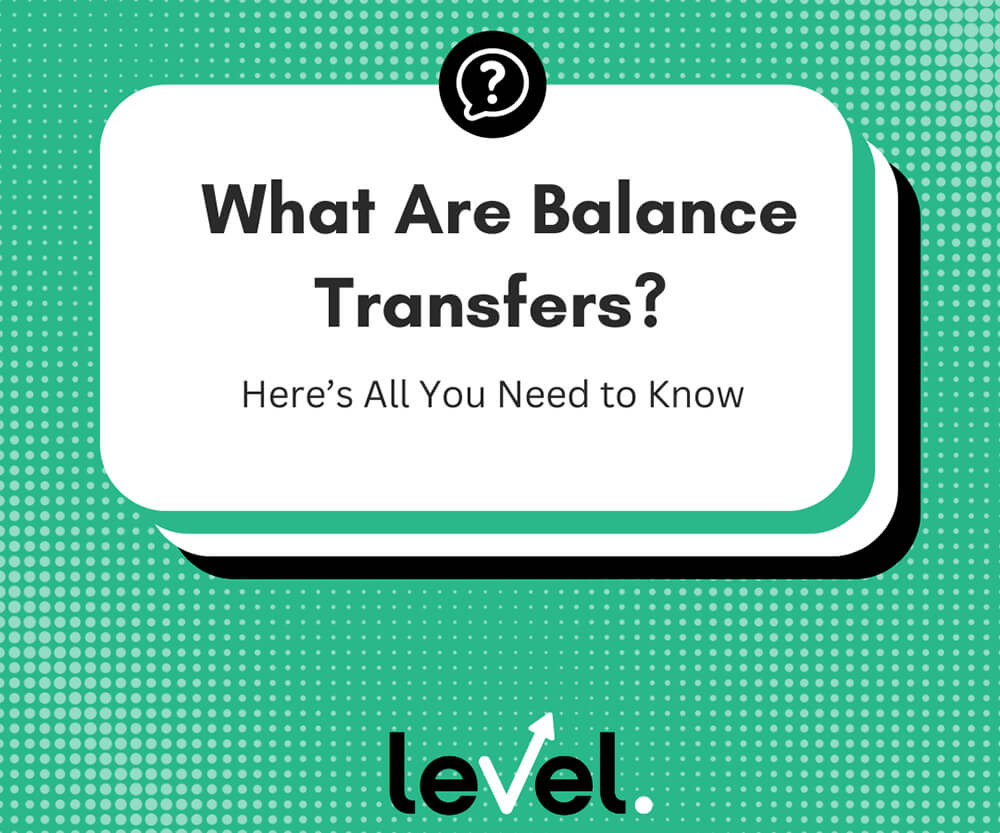
What are Balance Transfers? Here’s All You Need to Know
Moving your current debt from one credit card to another is known in finance as a balance transfer. People usually resort to this transaction to benefit from lower interest rates (or other advantages) offered by the new card provider.
Balance transfer credit cards allow you to consolidate your outstanding debt on multiple credit cards onto a single one. This way, you can pay back your debt faster and at a lower cost.
To answer the question “What are Balance Transfers?” in greater detail, we have reviewed their features, as well as their risks and alternatives.
Balance Transfer Credit Cards: Main Features
0% Interest during the Initial Period
This is the main reason most people apply for a balance transfer credit card. During the first 10 to 20 months, you won’t pay any interest on the debt. In this period, you won’t add new borrowing costs. You will only repay previously accumulated debt. The length of this introductory period depends on your card provider.
Normal Interest after the Initial Period.
When the introductory period has passed, you will pay a normal interest rate on your debt. Based on the 2021 Consumer Credit Card Market Report, the APR on credit cards were:
- between 16% and 18% for FICO scores above 740
- between 20 and 22% for FICO scores in the 670-739 range
- between 22 and 24% for FICO scores in the 580-669 range
- above 24% for FICO scores below 680
Therefore, it’s advisable to try and repay most (or all) of your credit card debt during the introductory period.
Balance Transfer Fee
Usually, you have to pay a fee when transferring your debt from one credit card to another. This can be between 3% and 5% of the transferred sum. A fee can be very impactful when you are transferring large sums. If your outstanding debt (across all cards) is $10,000, a 3% transfer fee means a transfer cost of $300.
Some providers don’t charge transfer fees because they hope this will attract more customers. However, make sure there aren’t other downsides. Many creditors offer shorter introductory periods with a higher interest rate after this period ends.
Annual Fee
Many creditors that offer balance transfer cards charge annual fees. There are some creditors that do not charge annual fees, but fees can run up to $90 or more per year just for having that type of account.
Provider
Generally, it’s not possible to transfer balances between credit cards issued by the same institution. Therefore, it’s better to look for new providers when applying for a balance transfer credit card.
Is There an Upper Limit for Balance Transfers?
Like any credit card, a balance transfer credit card has a credit limit. How much you can transfer from other credit cards is usually a percentage of this limit.
Let’s say your credit card limit is $10,000, and the balance transfer cap is set at 80%. This means that you can only transfer up to $8,000 from your older credit cards. If your current outstanding debt is higher than that, you will have to pay it back some other way.
In some cases, you are allowed to transfer a balance of up to 100% of your credit limit. So as long as your outstanding debt is not higher than your credit limit, you can transfer it to your new credit card in its entirety.
Factors like your income, current debt, and credit score will impact both your credit card limit and the balance transfer percentage.
What Can I Do If My Credit Limit is Too Low?
In this case, the most obvious option is to transfer the maximum amount possible to your balance transfer credit card. This would allow you to benefit from the introductory period for at least a part of your outstanding debt.
You’ll have to keep making minimum payments on your old credit card for the sum you couldn’t transfer.
Alternatively, you can ask your new card provider to increase your credit card limit. As we mentioned earlier, their approval (or lack of) will depend on your current income situation as well as your creditworthiness.
Do I Qualify for a Balance Transfer Credit Card?
Having a good credit score is usually necessary to qualify for a balance transfer credit card. That means that your FICO score should be at least in the high 600s when applying for a card.
A good or excellent score can also have a positive impact on:
- your credit limit
- your balance transfer percentage
- your regular interest rate after the introductory period
- your approval odds for the credit card
Obtaining a balance transfer credit card with bad credit is very difficult. Typically, most lenders will reject many applicants with a credit score below a 600 FICO. In this scenario, it may be better to look at other alternatives to pay back your credit card debt. We’ll focus on that at the end of the article.
Impact on Your Credit Score
Another doubt many have is whether applying for a balance transfer credit card will impact their credit score.
While the simple act of transferring outstanding debt from one credit card to another won’t harm your credit, applying for a new credit card might initially show a negative impact. That’s because it will trigger a hard inquiry on your credit report.
Obtaining a new credit card could also reduce the average age of your credit, especially if you have only a few cards at the moment.
However, a new balance transfer credit card can help you repay your debt faster. That’s because of the aforementioned introductory period, during which you won’t be accumulating new borrowing costs. As a result, the long-term impact on your FICO score could be positive.
If you take full advantage of the introductory period, you may find yourself with a better credit score than that you had before applying for a new card.
What Are The Risks of Balance Transfers?
We have highlighted the benefits of balance transfers (and balance transfer credit cards). But what about the risks, aside from a negative short-term impact on your FICO score?
The biggest risks are usually related to getting too comfortable with the 0% interest rate offered during the introductory period. Customers may not use this chance to repay their outstanding debt as quickly as possible. Instead, they may see it as a chance to delay their payments (if not borrow more money). At best, they may find themselves in the same situation they were in before obtaining the new card when the introductory period is over. At worst, they will have added new debt to the initial amount.
That’s why it’s important to see balance transfer credit cards as a tool to reduce your debt rather than as an opportunity to kick the can down the road or buy yourself some more time.
What Are The Alternatives?
Obviously, there are other solutions you can look at when your goal is to repay your outstanding debt.
You can look into secured credit cards if you have a low credit score. Unlike traditional cards (which are typically unsecured), they require a cash deposit (which is usually as high as your credit limit). Some secured credit cards also allow balance transfers.
However, you don’t need to apply for a new credit card. Other solutions are available when you are worried that your outstanding debt is getting out of control.
For example, a loan from Level Lending could help you pay off your credit card debt and then you would only have one payment to make every month. You would not have to worry about making each payment for each card anymore.
Take our quiz or call us at 888-922-4015 and find out for free how you can finally leave your debt behind you.







Sorry, the comment form is closed at this time.